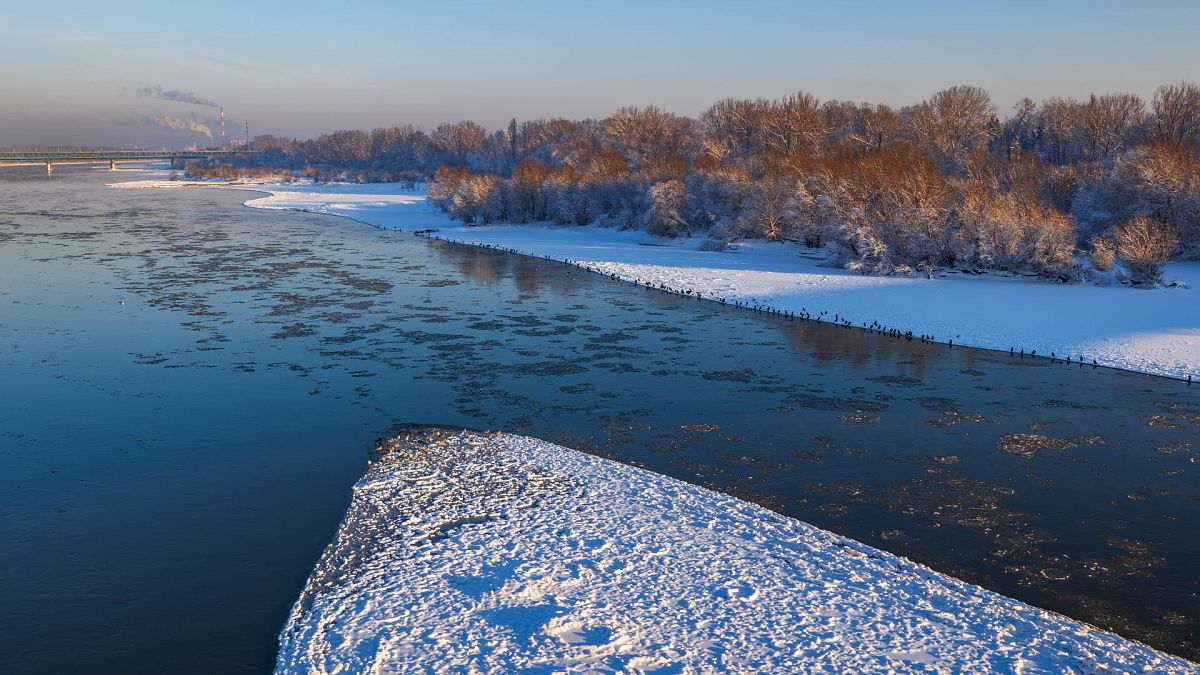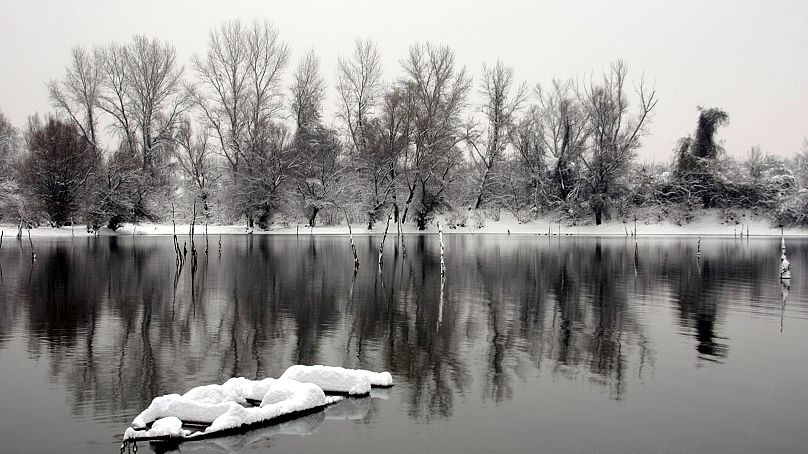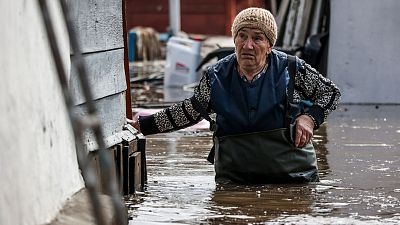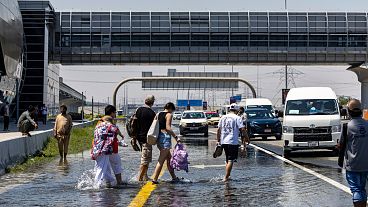Europe’s snowpack is disappearing as winters warm. What is it and why is it important?
River basins around the world that were once regularly snowbound are increasingly seeing their snowpack shrink and climate change is to blame, a new study has found.
“Many of the world’s most populous basins are hovering on the precipice of rapid snow declines,” concluded the study of snow amounts since 1981, published on Wednesday in the journal Nature.
The study found a key threshold for the future of snowpacks in the Northern Hemisphere: -8 degrees Celsius. In places where the winter temperature average is colder than that, the snowpack often survives because it's cold enough. But areas warmer than -8C for a winter average tend to see their winter wonderlands melt. And it's happening fast.
“You’re potentially in this regime of just really rapid and accelerating losses with warming,” says lead author Alexander Gottlieb, an Earth systems scientist at Dartmouth College in the US.
What is snowpack and why is it important?
Most past studies have looked at snow cover, which is a simple measurement of whether the ground has snow or not. This latest research examined snowpack, a more encompassing measurement that includes depth and amount, at its general peak in March.
Spring snowpack is critical for delivering a steady supply of drinking and irrigation water to billions of people, with bigger and earlier melts causing problems.
University of New Hampshire Earth systems scientist Elizabeth Burakowski, who wasn't part of the research, says the study shows “beyond a reasonable doubt that humans are responsible for the decline in snowpack in dozens of river basins across the Northern Hemisphere" and melting of the snow “will ratchet up with each degree.”
“The study demonstrates that our snow future depends on the path we take to act on climate," Burakowski writes in an email.
What's causing snowpack to disappear?
Gottlieb and Dartmouth climate scientist Justin Mankin examined 169 northern hemisphere river basins, finding a significant 40-year downward trend in 70 of the river basins, an increasing trend in a dozen and no trend in the others.
In 23 of those shrinking snowpacks, Mankin and Gottlieb, using variations on standard scientific techniques, were able to show that climate change clearly contributed to the melt. In eight river basins, all in chilly eastern Siberia, they found climate change helped build snowpack as precipitation increased but temperatures stayed cool enough to preserve it.
Europe and North America are getting some of the biggest spring snowpack losses, they found, including the Neva and Don river basins in Russia; the Dnieper in Russia, Belarus and Ukraine; the Vistula in Poland; and the Danube, which flows through or borders Germany, Austria, Slovakia, Hungary, Croatia, Serbia, Romania, Bulgaria, Moldova and Ukraine.
In the US, the worst affected river basins are the Great Salt Lake in Utah, the Merrimack in New Hampshire and Massachusetts, the Connecticut, the Susquehanna in New York and Maryland, the Hudson in New York, and the Delaware.
A good example of shrinking snowpack is the upper reaches of the Colorado River basin in Colorado and parts of Wyoming, Gottlieb says. There, the winter temperature averages around -5 degrees Celsius, seemingly cold enough for snow because it’s below freezing, but not really, he says.
“This is a place where we’ve started to see these kinds of accelerating losses start to emerge,” Gottlieb says. “We see this really clear picture of anthropogenic forest snow loss over the last 40 years or so.”
Gottlieb and Mankin documented fingerprints of human-caused warming by using the standard climate attribution method of comparing what happened in the last 40 years of a real warming world to thousands of computer model runs showing what would happen to these river basins on a fictional planet with no climate change.
Places chillier than -8C account for 81 per cent of the Northern Hemisphere snowpack, but they don't hold many people, only 570 million, Mankin says. More than 2 billion people live in areas where winter averages between -8 and zero Celsius, he says.
Snowpack is likely to change at an ever faster pace
What’s key, especially for water supply, is that “as warming accelerates, the snowpack change is going to accelerate much faster than it has,” says Daniel Scott, a scientist at the University of Waterloo who wasn’t involved in the study.
That’s because what’s happening is not gradual. Above a certain temperature, melt gets moving fast. Below that -8C mark, it’s cold enough that the extra moisture in the air from climate change may result in more snow and increase snowpack, something Gottlieb and Mankin say they saw in eastern Siberia.
That -8C threshold “tells us more clearly how much risk there is and where,” says University of Colorado ice scientist Waleed Abdalati, a former NASA chief scientist who wasn't part of the study.
The ski industry is an example of how the economy will suffer
The ski industry - with sometimes stark visuals of manufactured snow on an otherwise brown landscape for winter revellers to enjoy - has long been an easy to understand example of an economy that will suffer from the lack of snow.
Many ski areas wait anxiously every year for Mother Nature to bring enough powder to start running their lifts. Others have closed altogether after their seasons got too short.
Larger corporate-run mountains, such as Colorado's Aspen Snowmass, are able to operate consistently despite less snow and shorter winters.
“Opening and closing days remain constant due to snowmaking, which shows how important that is,” says Auden Schendler, senior vice-president of sustainability at Aspen One, the parent company of Aspen Skiing Company.
They also invested in building new ski runs at higher elevations where snow is more reliable than at the base, insulating them from substantial economic loss - for now.
“That in no way reduces the urgency of the need to act with force and at scale,” Schendler says. Aspen Snowmass is among a growing handful of ski areas that are embracing climate activism as the new industry standard, recognising an urgent need to lobby for climate-friendly policies if they want to exist well into a warming future.




